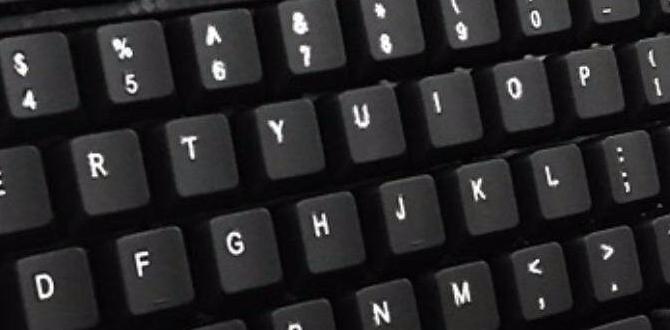Epson Mac Driver: Effortless 64-bit Install
Navigating the world of technology can sometimes feel like deciphering an ancient language, especially when it comes to installing new hardware on your beloved Mac. However, when it comes to getting your Epson printer up and running with macOS, the process for an epson printer install driver for macos 64 bit has become remarkably streamlined. With a few simple steps, you can be printing your documents, photos, and creative projects in no time. This guide will walk you through the entire process, ensuring a smooth and successful installation.
The shift towards 64-bit architecture has been a significant evolution in computing, and macOS is no exception. This enhancement allows for more efficient use of system resources and improved performance for demanding applications. Consequently, manufacturers like Epson have diligently updated their drivers to be fully compatible with these advanced operating systems. For Mac users, this means peace of mind knowing that their Epson printer will function optimally with the latest macOS versions.
Understanding Your Epson Printer and macOS Compatibility
Before embarking on the installation journey, the first crucial step is to identify your specific Epson printer model. This information is typically found on the front or top of the printer itself, or within the printer’s documentation. Knowing your model number is essential for downloading the correct driver. Once you have this, you can confidently proceed to the Epson support website.
Next, ensure your macOS is up to date. While Epson strives for broad compatibility, newer macOS versions often introduce changes that might necessitate the latest driver versions. You can check for macOS updates by going to System Settings (or System Preferences on older versions) and clicking on “General” followed by “Software Update.”
The Epson Printer Install Driver for macOS 64-bit: A Step-by-Step Guide
The core of our discussion revolves around the actual installation. Epson has made this process quite intuitive.
1. Visit the Epson Support Website: The most reliable place to find the correct driver is directly from the source. Open your web browser and navigate to the official Epson support website for your region. Look for a “Support” or “Downloads” section.
2. Enter Your Printer Model: On the support page, you’ll find a search bar or a prompt to enter your printer model. Type in your printer’s exact model number and press enter or click the search icon.
3. Select Your Operating System: The website should automatically detect your operating system, but it’s always a good practice to confirm. Ensure “macOS” is selected. You might also see specific macOS version numbers listed. While Epson generally provides a universal driver for recent macOS versions, if you are running a very specific or older version of macOS, you may need to select that. The key is to ensure you are downloading a driver designed for a 64-bit operating environment, which is standard for modern macOS.
4. Download the Recommended Driver: On the driver download page for your printer and macOS, you will likely see a few options. For most users, the “Recommended” or “Full Driver and Software Package” is the best choice. This package typically includes not only the essential printer driver but also utility software that can help with maintenance, scanning (if applicable), and other printer functions. Download this package. It will usually be an “.dmg” file.
5. Run the Installer: Once the download is complete, locate the downloaded “.dmg” file (it’s typically in your “Downloads” folder) and double-click it. This will mount the disk image, and a new window will appear showing the installer package. Double-click on the installer file (usually a “.pkg” file).
6. Follow On-Screen Instructions: The Epson installer is user-friendly. Click “Continue” or “Agree” through the introductory screens, licensing agreements, and any selection steps. The installer will guide you through the process. You may be prompted to connect your printer via USB or add it to your network if you choose a network connection.
7. Printer Connection:
USB Connection: If you’re using a USB cable, ensure your printer is powered on and connected to your Mac before or during the installation process, as prompted by the installer.
Network Connection (Wi-Fi/Ethernet): If your printer is already connected to your network, the installer usually has a utility to find and add network printers. You might need to enter your printer’s IP address, or the installer can search for it automatically.
8. Complete the Installation: At the end of the installation, you will likely be asked to print a test page. This is highly recommended to ensure everything is working correctly.
Troubleshooting Common Issues
While the process is designed to be straightforward, occasional hiccups can occur.
“Driver Not Found” Error: This usually means you’ve downloaded the wrong driver for your specific printer model. Double-check the model number and revisit the Epson support site.
Printer Not Responding: Ensure the printer is powered on and properly connected (either via USB or the network). Restart your Mac and the printer. Sometimes, simply removing and re-adding the printer in your Mac’s printer settings can resolve connectivity issues. Go to System Settings > Printers & Scanners, click the “+” button to add a printer, and select your Epson from the list.
* Permissions Issues: Occasionally, macOS security settings might prevent the installer from running. You might need to grant “Accessibility” or “Full Disk Access” permissions to the installer in System Settings.
By following these steps, you should be able to successfully perform an epson printer install driver for macos 64 bit, ensuring your printer is ready to tackle all your printing needs. Epson’s commitment to providing robust and compatible drivers for modern operating systems means that getting your printer connected is less of a chore and more of a simple, efficient task. Enjoy your seamless printing experience!

